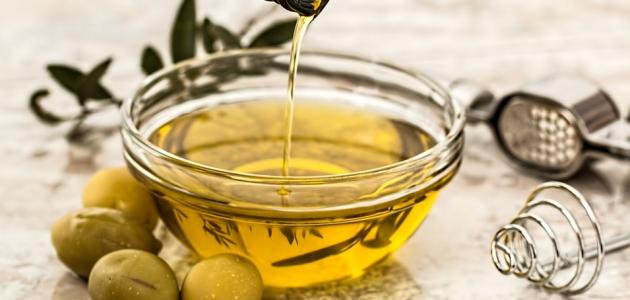Contents
Algae bread and weight loss
Recently there has been talk about the relationship of algae bread to weight loss, in addition to some other health benefits, and based on the information provided in this article, the nutritional value of bread made from algae, or whose ingredients are mixed with it, will depend on the proportions of the elements in it, which It is determined by the type of algae , the time of its harvest, and several other factors, and this applies to its use in weight loss , as if it is used as an alternative to white bread, for example, it will have a beneficial effect if it is used in a balanced diet; The algae bread is rich in fiber first, and the calories are low in most types. Secondly [1] As for the use of algae for weight loss, a study conducted at Harvard University indicatedOn several popular weight loss products that were published in the American Family Physician's Journal in the 2004 issue of the fact that the algae Spirulina showed no weight-loss results, it was published in the non-recommended lists. [2] In contrast, a recent study found a type of carotenoids found in green algae (Codium fragile, Caulerpalentillifera, and Umbraulva japonica), which is siphonaxanthin. And it was published in the Journal of Nutrition that siphonoxanthin has an adipocyte inhibitory effect in mice, and no such study has been conducted in humans yet. [3]
Algae
Are living organisms that belong to the Kingdom of protists similar plant in being self - feeding, and found in nature microscopic size, and sizes of large, algae contain protein, sugars, as well as unsaturated fats, and contain several types of vitamins , and inorganic elements, antioxidants, And metal. [1]
Humans have used algae as food for thousands of years, and ancient civilizations defined a large number of algae in terms of their medicinal, nutritional, and even industrial uses. Indeed, scientists have found that the origin of the name of the month of May goes back to the era of the Tsimcians who inhabited America in the past, where they were consumed This name is from the time of harvesting one of the types of pyropia algae. Recently, the algae has become a global economic resource, as the profits of the global harvest of algae in 2013 are estimated at about $ 6.7 billion, [1] in addition to the fields in which algae were used in the past. It is now used as a coagulant in food additives. [4]
In drinks, and as a nutritional medium for the growth of bacteria, in addition to nutritional supplements , this may explain the global trend towards algae products as a healthy alternative in several areas. [1]
Nutrients
Algae is a good alternative for vegetarians and a food source that humans have used since ancient times, due to the fact that it contains a number of important elements, as follows:
Protein
The percentage of protein in algae varies according to several factors: type, harvest season, and color. In microscopic species, protein makes up 70% of the dry components of algae, which is approximately the proportion of protein in eggs . Generally speaking, the human body digests protein in algae less efficiently than protein from animal sources. [1]
Fats
The proportion of fats in algae is affected by several factors as well as protein , for example, omega-3 is affected by the type of harvest, such as whether it is wild or artificial, and its concentration is higher in winter than in summer, and perhaps the most important characteristic of algae fats is that they are unsaturated fats, which the body benefits from in forming membranes Cells, energy storage, and the formation of molecules of cell receptors. However, relying on algae as the only source of energy cannot cover the needs of the body according to a study published in the Journal of Applied Physiology in 2006. [1]
Sugars
Algae contain simple and complex sugars, and their percentage varies according to the type of algae, and several other factors that differ according to the different types of major sugars in algae, for example alginate is a major component in brown algae, while it is found in small quantities in other types and colors. As for fiber, large edible algae contain a large amount of it, which makes it a healthy choice in many diets, whether for weight reduction or treatment of constipation , or health systems in general, as the percentage of fiber ranges from 23.5% in the type of codium redia to 64.0% in the type of Gracilria Sep , meaning that the contents of the contents of the superiority of fiber wheat bran , according to a study published in the European Journal of food research and Technology for the year 2001.[1]
Vitamins
Algae is distinguished by its richness in a group of B vitamins , as it contains vitamin B1, B2, B6, and vitamin B12, which is present in very small quantities in plants, and the proportion of vitamin A in some types of algae exceeds the proportion found in carrots, [1] and also algae contain the most composition Efficacy of vitamin E present in vegetable oils, as well as vitamin C in an amount equal to vegetables: such as tomatoes and lettuce, and on the other hand, it applies to the ratios of the above vitamins, as they differ according to the months of the year, in a study conducted by the Journal of Applied Physiology in 2009, which found that the concentration of vitamins (C, B1, and B2) was slightly lower in the summer months (June, July, and August) compared to September and April, when concentrations of vitamin C, B1, and B2 increased, and the level of vitamin A also increased in November. [1]
Minerals and inorganic elements
So far, there are not enough detailed studies on the nutritional effectiveness of the minerals that are supported by algae, and there is insufficient information also about the precise impact of the mineral content by changing seasons and harvest times, but one of the recent studies published in the Journal of Applied Physiology in 2016 indicated that Algae that grow in hot tropical regions contain a lower concentration of minerals than those that grow in higher latitudes. [1]
iodine
The long history that linked seaweed consumption with the prevention of diseases related to the thyroid gland has led scientists to establish a relationship between iodine and thyroid diseases , as marine algae are considered a good source of iodine, and the amount of iodine in common algae is not affected by the drying processes that follow the harvest of algae. However, it is affected by the process of cooking and storing later, and this is what makes the quantities indicated by the dietary tables of iodine in meals and products that contain algae inaccurate. [1]
Iron
It is possible that large-sized algae are rich in iron , but many studies are being conducted to find out the extent to which the percentage of iron in algae is affected by the change in the place of growth, type, and season of harvest, and therefore there are no absolute values that indicate the percentage of iron in the algae. [1]
Allergy and toxicity
Despite the many benefits that characterize algae, it is subject to pollution, especially of large sizes, as it is possible for algae to be contaminated with heavy metals such as arsenic or bromine, and it may also grow in water in which some strains of bacteria that cause toxins in the nerves and liver live. There is a study published in 2014 in the Journal of Food and Chemical Toxicology that indicated the occurrence of hypersensitivity after consuming one of the common types of algae, which is Spirulina, but the circumstances of this case were not clear, as it is believed that the source of this algae was wild and not Artificially, [1]And there are other cases that were poisoned due to the mixing of the species on the people who collected them, as they were of the toxic type that contains a large percentage of quinic acid, and such incidents may not have the same impact in the Arab world, but with an increase in the percentage of Tourists in countries facing this type of problem, international organizations and institutions have begun to call for the development of global standards that guarantee the safety of the algae consumer, whether he is a visitor or a resident. [1]
References
- ^ A b t w c h x d y t g o u r Mark 's WellsPhilippe L . PotinJames S Craigie, Et al . (April 2017), "Algae color : as Nutritional And Functional Food Sources: Revisiting Our Understanding" , Journal Unit Of Applied Phycology , Retrieved 27-9-2017.
- ↑ ROBERT B. SAPER, MD, MPH, DAVID M. EISENBERG, MD, et al (November 2004), “Common Dietary Supplements for Weight Loss” , American Family Physician , Retrieved 27-9-2017.
- ↑ by Ibrahim Najjar 's , Hasan 's Iessa, Profile Wissam Zam (07-04-2015), " a promising study for the treatment of obesity by green algae" , the researchers Syrians , briefed him on 27.09.2017.
- ↑ Dipjyoti Saha, Suvendu Bhattacharya 2010 Dec), “Hydrocolloids as thickening and gelling agents in food: a critical review” , www.ncbi.nlm.nih.gov , Retrieved 27-9-2017.
















